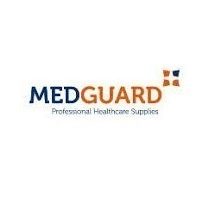Tips to Response in a Proper Way Towards Burns at Home
Burns are common accidents that happen and come with a wide range of severity. These include first-degree burns which only burns the skin’s outermost layer, second-degree burn which causes blisters and swelling and third-degree burns which are the most serious and harmful ones leading to nerve damage.
When a person gets burned in the heat of the moment, one may not know what to do. But after being focused, knowing the kind of burn that occurred will help you to tend to it by using the right medication from the first-aid box to ensure it heals as quickly as possible.
What Should You Do and Not Do With A Fresh Burn?
There are several things that you should consider before running to get the emergency first-aid kit as it may make the situation worse. Some of these factors include
What You Should Do?
- You must treat the first-degree burns with antibiotic ointments and cover them with a gauge loosely.
- Make sure to rinse the burn with water. However, do not use ice or ice water to rinse it as it can worsen the burn.
- If it is a major third-degree burn, then do not hesitate to contact the doctor immediately.
What You Should Not Do?
- Many people think applying butter can soothe the pain. Remember not to do this as it can worsen the issue. Rather rely upon an antibiotic ointment from your first-aid box to offer relief.
- It is strictly recommended not to burst the blisters as it may increase the risk of infections.
- Do not cough or breathe in front of the victim as it may contaminate the burn.
How to Treat Burn at Home?
To avoid getting hurt anymore, take the victim away from the burn’s source. As the third-degree burn may require a doctor’s consultation. If it is a first-degree or a second-degree burn, then it can be treated at home. To find out how you can treat the victim, take a look below
Step 1: Remove Any Clothing or Accessories
The first thing you must do is remove everything that is covering the burnt area of the skin. Make sure to remove any jewellery, especially rings as burned skin swells.
Step 2: Try to Cool the Burn
Now you must cool the burn by placing it under the room-temperature running water. However, it is suggested that you avoid using extremely cold or ice water as it may worsen the condition.
Step 3: Wash It
As the burn can be considered as a type of wound, it is important to keep it safe from infections. Hence, you can wash it using normal temperature water and a good quality soap.
Step 4: Apply Ointment
After the burn is clean, allow it to dry. Now you have to apply a thin layer of antibiotic ointment on the burn. When you do this, it protects the wound from being infected by bacteria or germs of any kind. Also, it acts as a protective barrier between the skin and the dressing that you will be covering the burn with. This means your dressing would not stick to the wound.
Step 5: Add Clean Dressing
You can take a sterile gauge to dress the wound or a non-stick pad would also work best. Once you have applied the ointment, you can proceed with this step. However, make sure that you are not tying the dressing too tight.
Let it breathe and not hurt the burned skin of the victim. Additionally, you must change the dressing at least one or two times a day. Moreover, keep the dressing away from getting dirty or wet.
Step 6: Offer Oral Medications
Besides taking care of the burn from outside, you must offer oral medications to the victim. Some of the medications that are commonly given include Ibuprofen and Naproxen. However, you can ask the doctor to suggest a better medication.
Step 7: Keep Inspecting the Burn
Burns change quickly and it is important to keep an eye on the victim. If you see any signs of infection, then consult with the doctor immediately.
Step 8: Avoiding Bursting Blisters
Instead of bursting the blisters, you must protect the burn at all costs. When blisters are popped, it can lead to infection.
Treat the Burn Victim Using the Best Quality Medical Supplies
Many people are not aware that burns can lead to infections. This is why the carer needs to be extra cautious when applying medication or using any medical product. And if you’re wondering what to do if your child meets a head injury, having the right supplies on hand is crucial. If you are searching for the best quality medical supplies, including an emergency first-aid kit, then you can come to us at MedGuard.
We are the leading wholesalers and retailers in the UK with all types of medical equipment available. Our items are approved, tested, and of top-notch quality that meets the expectations of consumers. Additionally, our items are available at a highly reasonable price.

